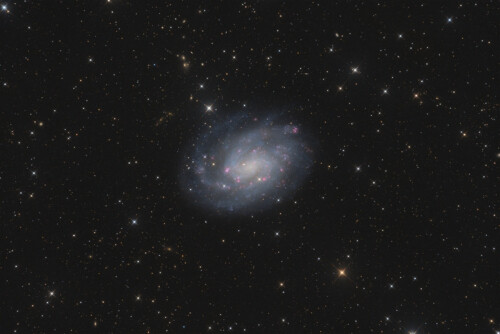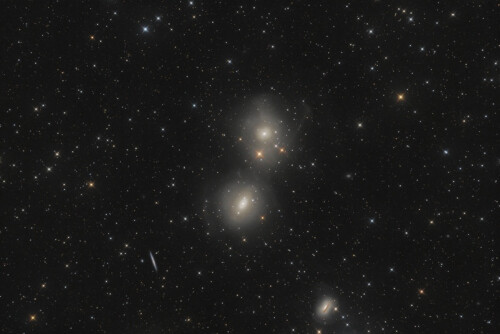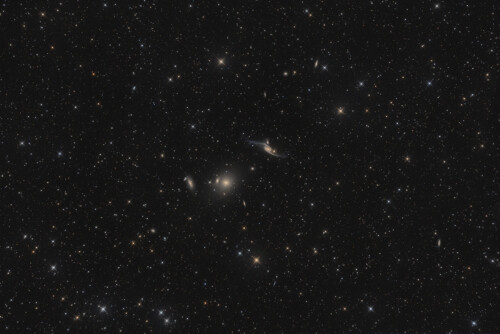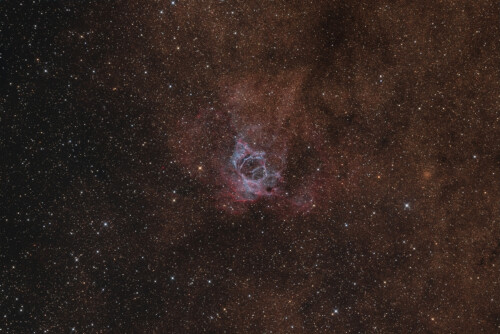Hello group!
After the preparation and realisation of the CEDIC took up a lot of time, I now have more time to work through and show the huge amount of raw data from Namibia.
Let’s start with NGC 300, a classic in the southern sky with a beautiful spiral structure and many HII regions. NGC 300 is much smaller than the Milky Way with a diameter of about 45 000 light years.
NGC 300 with 10" Lacerta Newtonian, QHY268m, Ha-LRGB:

NGC 1549 and 1533 form a beautiful interacting pair of galaxies in the constellation Dorado. NGC 1546 at bottom right has a very similar radial velocity of approx. 1250 km/s.
NGC 1549 with 10" Lacerta Newtonian, QHY268m, LRGB

NGC 6872 - Pavo Group: the Pavo group of galaxies consists of three interacting pairs of galaxies, among others. NGC 6872 is one of the largest known spiral galaxies with an extent of 350,000 x 99,000 light years. In the X-ray range, a 330,000 light-year-long structure can be detected between NGC 6872 and NGC 6876.
Pavo Group with 10" Lacerta Newtonian, QHY268m, LRGB

G2.4+1.4 and WR 102 in Sagittarius: WR 102 is a star of the very rare spectral class WO, of which only nine are known so far. It belongs to the hottest known stars with a surface temperature of about 200 000 Kelvin. The surrounding nebula G2.4+1.4 probably does not originate from the WR star, but is formed by photo-ionization.
WR 102 with 10" Lacerta Newtonian, QHY268m, Ha-[OIII]-LRGB

The entire control was done with Voyager Advanced - runs perfectly!
All the best,
Markus